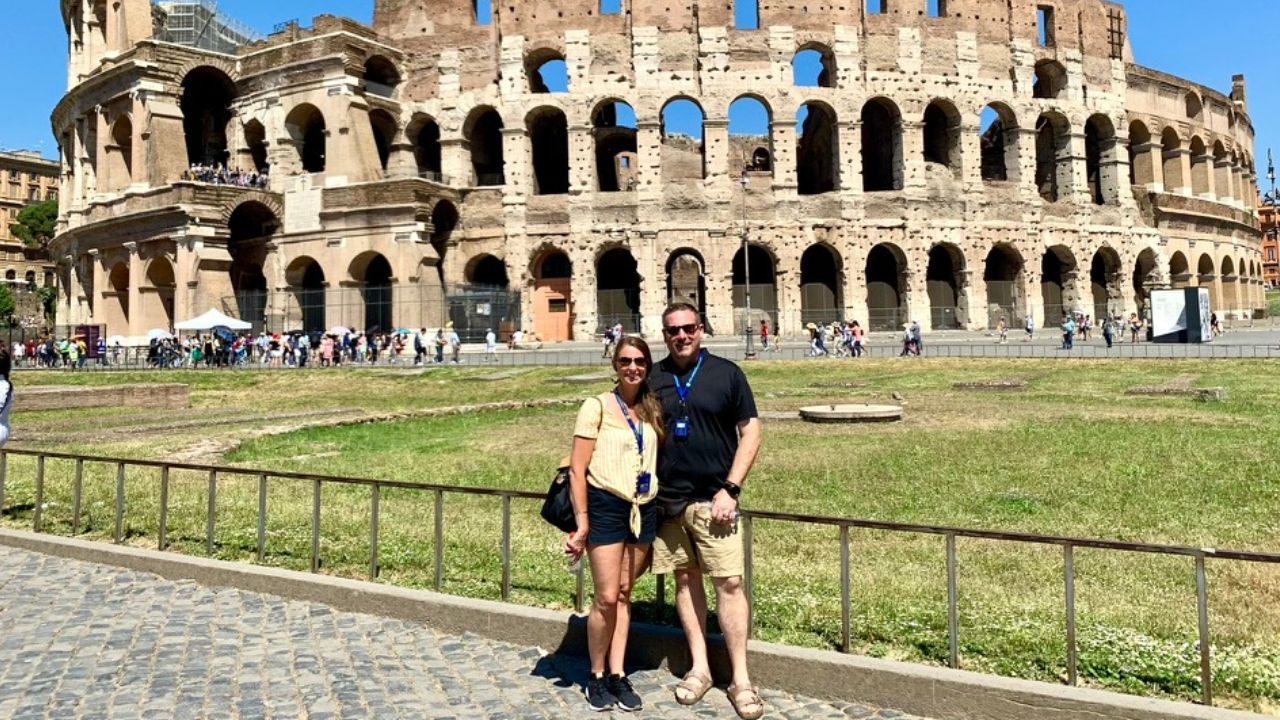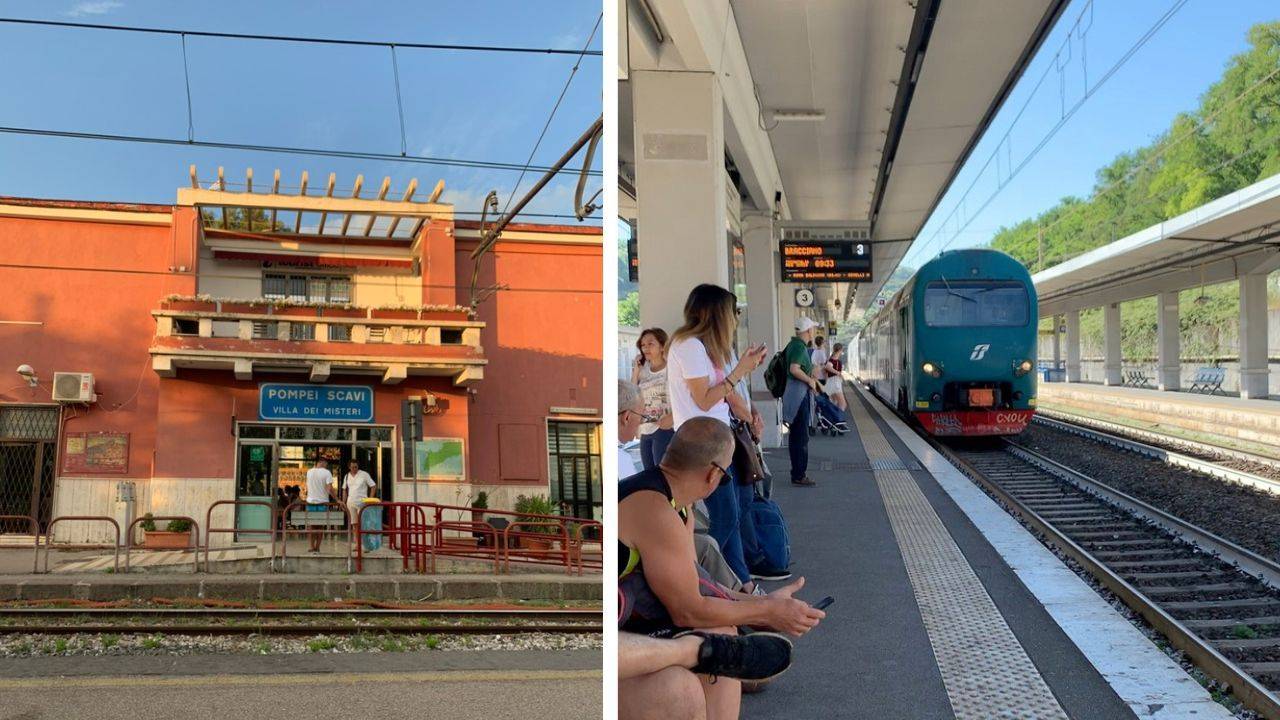10 Ways to Design A Lifestyle that Allows You to Travel More

written by Melissa Barronton
I should title this post, How to Design a Lifestyle that Allows You to _____________. (Fill in the blank with travel more, live where you want to, be able to take time off for appointments, homeschool your kids, or whatever it is that you wish you could do right now.
We recently had a death in the family. Scott's stepfather, who had been married to his mom for almost 10 years, died of cancer. While it was expected, it wasn't expected to happen so quickly.
We were fortunate to be there with them. Scott had gone up a couple of weeks before to give his brother, who lives close by, a little break, since he had been doing a lot of the helping.
Thankfully, we have designed a lifestyle that allows us the ability to pick up and go, doing things like this, even if it still means working while we are away.
Lifestyle Design doesn't mean not working, and it also doesn't necessarily mean you own your own business or you work for yourself.
Lifestyle design is the intentional practice of creating a life that aligns with your values, passions, and goals, rather than following a traditional or expected path. It means consciously deciding how you want to live, work, travel, and spend your time, and then making choices that support that vision.
While lifestyle design in the past has been rarer, it has always been possible. Travelers like Rick Steves created their lives and livelihoods around lifestyle design and travel before the internet, remote work, and the creation of creative online businesses now allow more people to design the life they want, rather than following the traditional path.
Since we are often asked the question, 'How do you travel so much?' I'll answer it here as well. Many of our trips end up being designed around Scott's travels. This year, Scott has traveled to London for work, and we added a few days on at the beginning (at our expense) and a stopover in Iceland on the way home. We also traveled to Germany for Scott's work and added on vacation days to do our walking trip in Umbria, Italy, with Macs Adventure. I pay for my flights and meals, of course, but it allows Scott to see more of a place than he would if he traveled solely for business purposes and then returned home. I usually get to see more of a place than Scott does, but our blog, Instagram, and podcast have benefited from that.
We also live in Florida because of Scott's remote working situation. Remote work is a big part of lifestyle design. Even if you still have to go into an office occasionally, on other days, you could live farther away, attend your kids' sporting events, or take up pickleball or another sport yourself, or pursue a hobby you have long been putting off due to a daily commute.
Scott originally started working remotely almost a decade ago when he took a job with a company based in New York City. Since much of his work would require travel to other places anyway, he negotiated a remote work assignment (in writing) when taking the job. Fast forward a few years, and on to the next job, we had just moved to be close to our first grandchild, and he negotiated (again) a remote assignment for a company based in Ohio. When the pandemic hit, working remotely was already a part of our lifestyle. So when our grandchildren moved again, we wanted to be still close to them but fulfill my dream of living very close to the beach.
But what about me, you ask? For the last 13 years, I have been an entrepreneur after working in manufacturing (and during orientation, thinking to myself, I have to come here all day every day) and then in education, where at least the summers were free, as well as extended breaks for holidays, and it followed the schedule of my kids when they were younger.
After that, I started a home staging business. Back in 2020, I wrote on my blog, at fynhome.com, "I’m a professional home stager and redesigner who started my business 7 years ago to get out of the 9 to 5 (or 6 or 7…). I wanted to create something that allowed me to utilize my creative passions and talents in designing homes, both for clients in their own homes and for clients selling homes, to present them in the best possible light. I’m proud to say my home staging business has done just that and want to share my client work, my personal work, and my lifestyle with you!"
That business allowed me to design my lifestyle, taking my son to school and picking him up, choosing the projects I wanted to work on and completing them on my terms, traveling with Scott, and earning an excellent income that enabled us to travel more. I still own this business and could pick up staging, redesign, and short-term rental staging and design if I wanted to; however, for my next phase, I knew I wanted to create something that was fully remote, had passive components, and tasks could eventually be outsourced. Staging requires you to be present at the job location, put in time for shopping, and also carry an inventory of items. While I still love it and am constantly rearranging my own home, it was a great stepping stone for us in our lifestyle design journey. However, I wanted our next venture to check even more boxes.
10 Ways to Design your own Lifestyle if you want to get out of the rat race, live the way you want to, retire early, or take mini-retirements, or whatever it is that you want to do that you can't right now because either time or finances or both are preventing it:
1. Negotiate Remote Work if possible, even if it is just one day a week. Prove that you are More Valuable and Productive when working remotely, and try to increase that. Even if you don't plan to travel or work somewhere besides your home, what can you gain with the time that isn't spent commuting or wasted in the office environment?
2. If you can't negotiate remote work with your current job, investigate changing to a job where you can work remotely.
3. Start a side hustle. I think that everyone needs a side hustle. My first one was Pampered Chef. Before I started teaching, I worked remotely for a payroll company for a while, and needed a little more income, so I started hosting Pampered Chef parties. While it didn't generate a substantial amount of money, I made numerous connections, gained valuable insights into running a small business, and received a significant amount of free Pampered Chef products, some of which I still have to this day.
Come up with a side business and get your kids to help. Pay them (there are tax benefits for both your business and them) and have them invest that money. You never know what their side business might do or that it might be there for you when you need it. I would encourage you to make it something you enjoy, but as remote and non-urgent as possible. The goal is to design your lifestyle the way you want it, so you don't want to tie yourself down with your side business.
Some examples include starting a blog or website where you earn money from affiliate links and digital products and guides, or creating photos or videos for businesses, products, or travel companies in exchange for free products, travel, or payment, depending on your skill and expertise, freelance work for social media, copywriting, design, photography, etc.
4. Start your own business. Instead of a side hustle, you may be ready to quit your job and dive into your own business instead. One word of caution: consider how, once you've set it up, you can be the owner rather than the full-time manager or worker. Owning a business can actually take more time than a 9-5 unless you start thinking about, from the beginning, how you will keep it simple, automate or outsource tasks, give up the need to control everything, and let others have autonomy to make decisions.
5. Reduce unnecessary expenses. Review your current expenses to identify areas where you can reduce or eliminate costs. It seems that many sneaky subscriptions have been popping up lately, so it's a good idea to review them monthly and ensure that you're not continuing to pay for things you no longer use. I'm not suggesting that you shouldn't buy things you want or need, or that you never do anything fun. I recommend prioritizing the things that are most important to you, such as experiences and travel, rather than material possessions.
6. Cut out the clutter. Clearing physical space reduces our stress level and clears up emotional space as well. When there is clutter, we can't properly rest and feel at ease. Getting rid of things you no longer use (even if you spent a lot of money on them) can also help you evaluate your future spending. Do you really need this? Will you use it regularly? Will it bring you joy or regret later?
This one comes specifically because of the recent death in the family. I have had the unfortunate responsibility of helping to clear out two homes of family members who have passed away, to sell or rent the property. Additionally, I have assisted numerous individuals in preparing their homes for sale. We accumulate a lot of stuff and junk that we don't even know we have, and we certainly don't use. Every single time I would find myself coming home to clear out cabinets, drawers, closets, shelves, and garages, seeing things that we spent money on, never use, and hold onto for that elusive time where we might need it. Donate it. Don't pawn it off on your family or friends.
7. Start Investing Early and Often. Use what you cut from the things you deem unnecessary spending and invest it. Get into the habit of adding to it each paycheck. Investing isn't just for retirement, and it can open doors for travel, mini-retirements if a job change comes along, and you can take some time off in between. You never know what you might want to do in the future, and having a stash of money set aside opens up opportunities. It may not seem like much now, but a little bit at a time with interest can really amount to something life-changing.
8. If you have kids, will homeschooling, hybrid school, or some other alternate form of traditional education help you in your lifestyle design—slow mornings, meals together, teaching life skills, and developing their talents and interests? I also used to teach high school math, specifically, and served as the chair of the math department for a few years. From that experience, and the experience of raising two kids who went through traditional school, I now have strong opinions about education and doing things differently that I won't get into here. Will a non-traditional school arrangement give you the freedom and flexibility to travel in the off-season when the cost and crowds are less? Will it give you the time and space to be with your children more and have them learn things that aren't possible in traditional school? There are so many options out there, so investigating ones that might work to help you design your lifestyle is worth it.
Lifestyle Design in Action
My daughter, who, in many aspects, I feel is wiser than I am and certainly wiser than I was at her age, is hybrid schooling her kids. She took her full-time position in social media and transitioned it into a freelance role, eliminating the expense of childcare. As a result, she is now able not only to provide an income but also to reduce her costs and be directly involved in her kids' education, supplementing with local programs such as a local farm school. Get creative with your skills and abilities, and find ways to let people know what you have to offer.
9. Reduce the extracurriculars. I might be stepping on some toes here. Still, suppose you are spending a significant amount of time and money on extra coaching, lessons, or joining the best teams in hopes of securing a scholarship or a professional position. Still, you are sacrificing family time and saving and investing to do so. In that case, it might be time to rethink. Sports should be about the child loving it in the moment, and if that moment passes, it's ok to step back. One activity at a time, and ideally, not having to juggle activities for multiple kids, which requires splitting your time between games, etc., is ideal.
A word about screentime: One caveat to both schooling and extracurriculars is not to change or reduce them in favor of more time on a screen or learning from a screen, so if the alternative schooling option is only from a screen, rethink it, or if reducing activities creates more time for screentime, then choose the activities instead.
10. Look into Real Estate Investing. For so many people, investing in real estate (especially short-term rentals) allows them not only to build long-term equity in a property but also to earn short-term income. This depends on many factors, but if you can find a suitable property and a good property manager who will allow you to cover the property's costs, it can provide you with extra income and equity in the property. The money we made from the sale of a short-term rental property a few years ago came in handy when we were making the move to Florida.
Do any of these resonate with you? Which changes can you start making today to get you closer to the lifestyle you want to design for yourself and your family?













